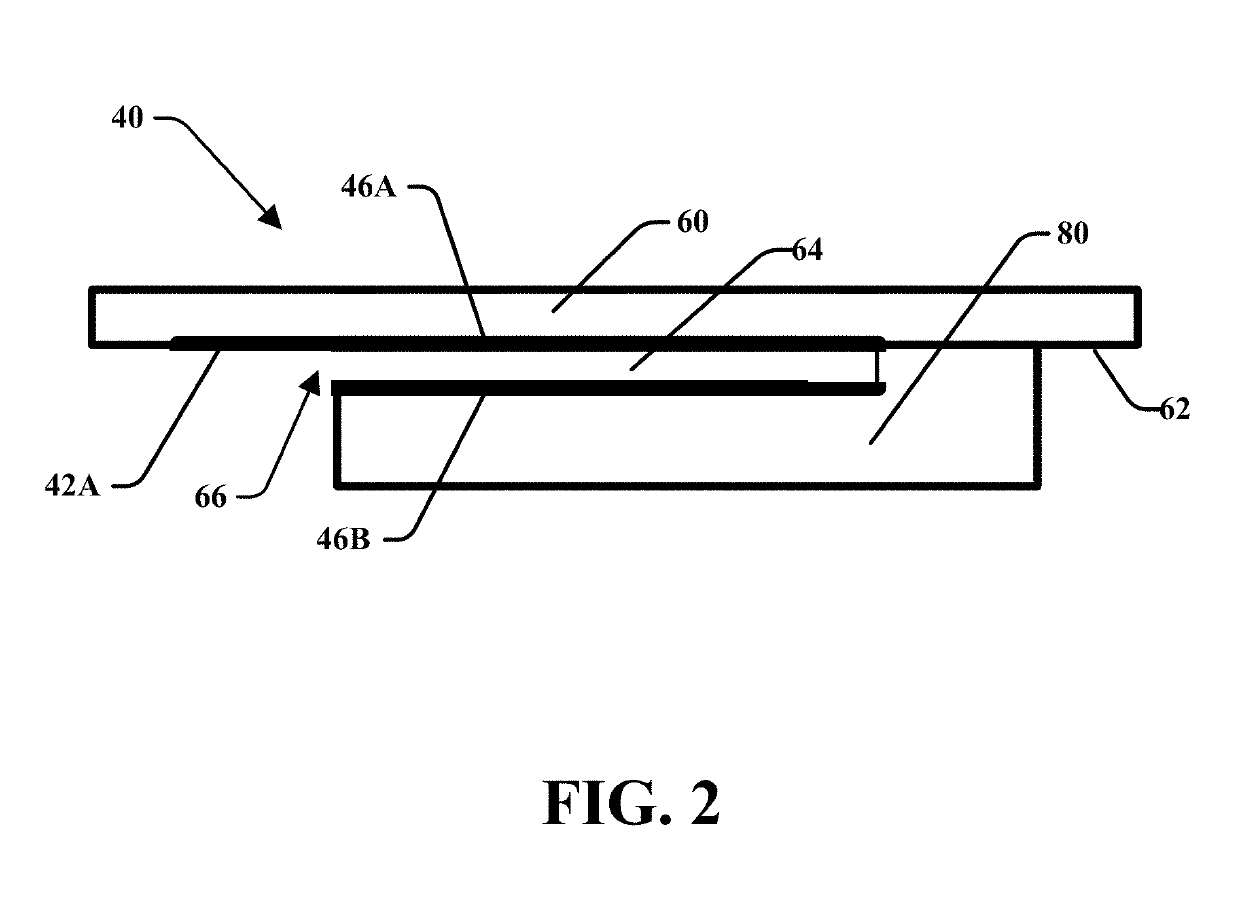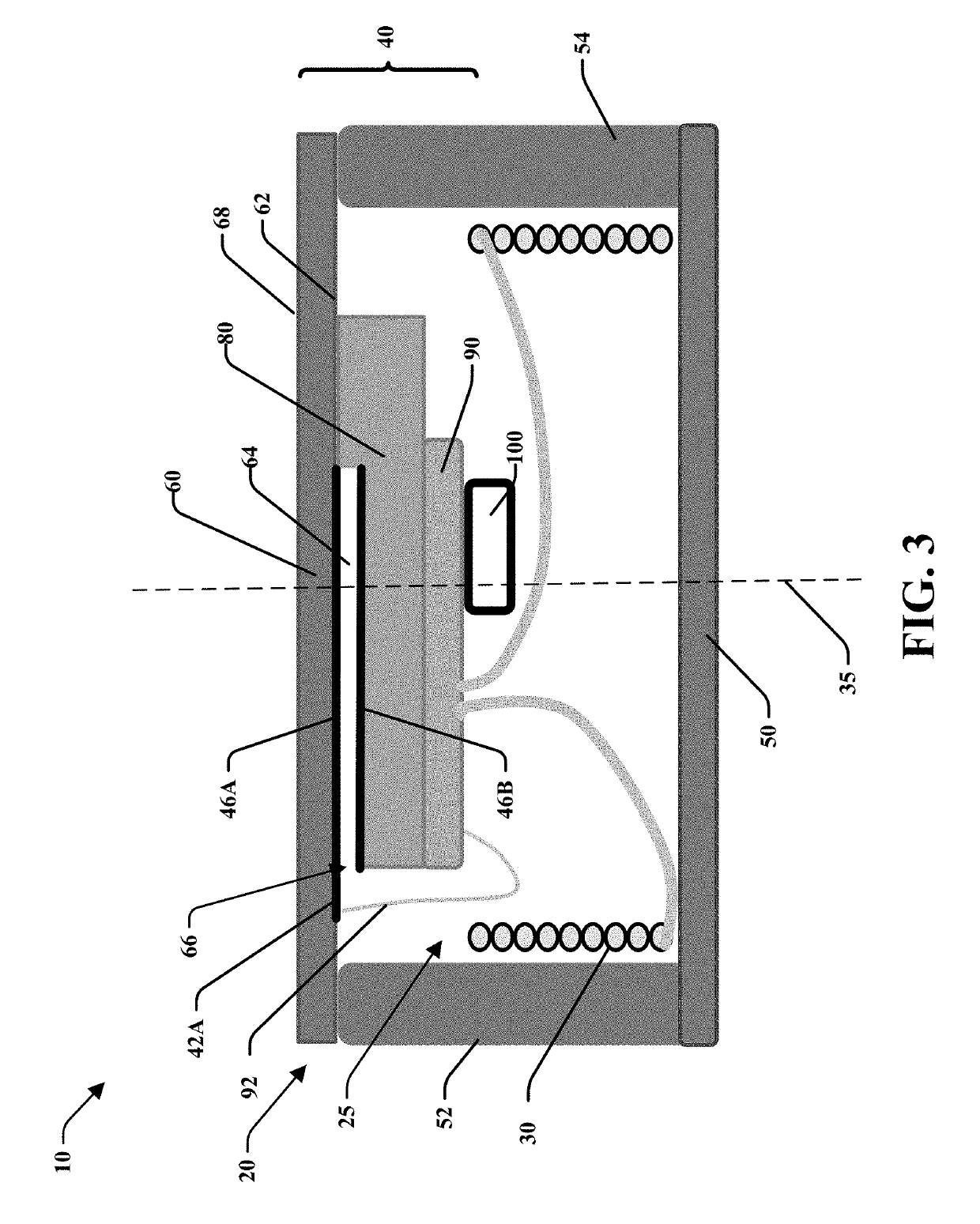MEMS device for an implant assembly
a technology of an implanted sensor and a body, which is applied in the field of structure for implanted sensor packages, can solve the problems of slow changes in distance between, signal drift, and unfavorable experience of capacitance changes, and achieve the effects of reducing capacitive gap changes, and enhancing at least one performance parameter of said implan
- Summary
- Abstract
- Description
- Claims
- Application Information
AI Technical Summary
Benefits of technology
Problems solved by technology
Method used
Image
Examples
Embodiment Construction
[0034]Reference will now be made in detail to embodiments of the invention, examples of which are illustrated in the accompanying drawings. It is to be understood that other embodiments may be utilized and structural and functional changes may be made without departing from the respective scope of the invention.
[0035]This application relates to an implant 10 and more particularly to an implantable sensor design and manufacturing approach to optimize manufacturability, size, longevity, RF characteristics, Q, and overall performance related to increasing sensitivity and minimizing thermally induced frequency offset. To improve the device design and to minimize thermally induced frequency offset, the implant may be constructed to optimize deflection of the surfaces of the implant capacitor while providing ample protection from the environment and maximizing space for the internal components such as the coil.
[0036]In one embodiment, the instant application refers to an improvement to th...
PUM
 Login to View More
Login to View More Abstract
Description
Claims
Application Information
 Login to View More
Login to View More - R&D
- Intellectual Property
- Life Sciences
- Materials
- Tech Scout
- Unparalleled Data Quality
- Higher Quality Content
- 60% Fewer Hallucinations
Browse by: Latest US Patents, China's latest patents, Technical Efficacy Thesaurus, Application Domain, Technology Topic, Popular Technical Reports.
© 2025 PatSnap. All rights reserved.Legal|Privacy policy|Modern Slavery Act Transparency Statement|Sitemap|About US| Contact US: help@patsnap.com



